The triumph of Robert Wickens
With three season titles in the IMSA Michelin Pilot Challenge sports car racing series on the line, the immediate pre-race atmosphere in the paddock of Bryan Herta Autosport on October 14, 2023, is calm. No coffee-fueled, last-minute thrashing on the cars, no raised voices, no this-is-it jitters.
For driver Robert Wickens, this is it, though. The team and manufacturer’s championship for Hyundai are important titles, but the most critical one is the driver’s championship. And going into today’s race at Road Atlanta, the Hyundai Elantra N TCR co-drivers Robert Wickens and Harry Gottsacker are up 20 points on the JDC-Miller MotorSports Audi RS3 LMS.
Twenty points is a slim margin; drivers can earn more than 2000 in a single season, and the Audi has already eaten into the Hyundai’s buffer by qualifying solidly on the pole.
So what does #33 have to do to win the title? “We have to beat the Audi,” says Gottsacker, a 24-year-old Texan with a solid background in sports car racing in Europe and America before he signed on with Herta Autosport in 2019. That was the first year former IndyCar racer Bryan Herta, father of current IndyCar driver Colton Herta, joined with Hyundai to form the multi-car team in the Touring Car Racing, or TCR, class.
Beating the Audi wouldn’t be easy. Part of the experienced, well-financed JDC-Miller stable, the Audi has one big advantage: It’s unnaturally quicker than the Hyundai. IMSA, the sanctioning body, has a check-and-balances system that “rewards” successful manufacturers with extra weight, smaller gas tanks, aerodynamic tweaks, or other penalties, all designed to slow the car down to create what is perceived to be a level playing field.
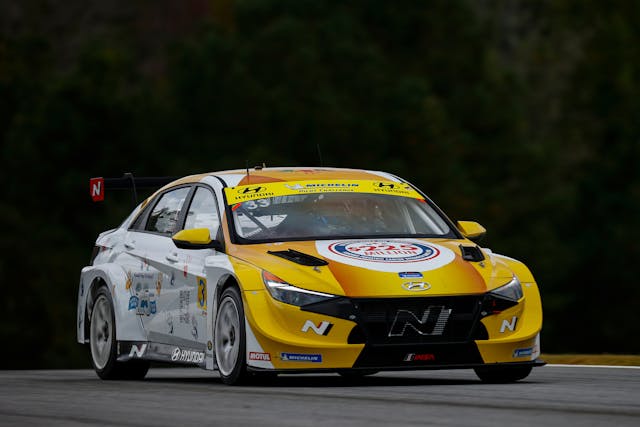
The Hyundais are the biggest, most powerful bunch in the series, and while their wins this season have often been due to good driving and smart pit strategy, they are the only cars burdened with the maximum extra weight, running at the highest ride height, carrying the smallest fuel tank.
They can’t consistently go as fast as the Audi in a straight line. They aren’t as nimble in the corners, and they can’t go as long on a tank of gas. The Audi outqualified the fastest Hyundai by a tenth of a second; that may not sound like much, but over the two-hour race, a tenth of a second per lap on a 2.540-mile track adds up to seconds.
***
Like countless drivers before him, Wickens has been chewed up and spit out by the Formula 1 machine. He did everything right in Europe, and eventually he made it to Formula 1 reserve driver. But without the very deep pockets of a sponsor or family money, and he had neither, a full-time ride wasn’t in the cards.
Wickens came home, and earned a tryout with Schmidt Peterson Motorsports, an IndyCar team. The tryout turned into a full-time ride. He debuted at the St. Petersburg Grand Prix season opener, where he qualified on the pole, a remarkable achievement.
Wickens acted as though it was no big deal; just doing his job, he said. By then, Wickens was 28, and not given to bouts of glee you might expect from a less seasoned driver.
Then Wickens went out and led almost the whole race. He was leading with two laps to go when Alexander Rossi made a low-percentage attempt to pass and wrecked them both. Wickens finished 18th, but they damn sure knew he was there. Wickens had a solid season and wrapped up the rookie-of-the-year honors with three races to go.
Then came August 19, 2018. On lap seven on the big Pocono oval, Wickens and Ryan Hunter-Reay touched wheels. The contact sent Wickens over Hunter-Reay’s car and into the catch fence, shearing off all four wheels and most of the bodywork before Wickens, still in the pod of the Indycar, hit the pavement. His car spun 14 times.
Wickens was alive, surprising those for whom the crash recalled Dan Wheldon’s fatal trip into the fence at Las Vegas in 2011. In fact, Wickens was “awake and alert.” Unreported, and not known until after he had been helicoptered to the hospital, was that his spine was damaged. Damaged, but not severed. He was paralyzed from the waist down.
He had suffered a thoracic spinal fracture, a neck fracture, tibia and fibula fractures to both legs, fractures in both hands, a broken right forearm, a broken elbow, four broken ribs, and a pulmonary contusion.
As soon as possible—actually, sooner than that—Wickens began training for his comeback. If will, determination, and very hard work could restore his damaged spine, he would be running marathons. Wickens was even competitive in rehab: “I want to have the best spinal cord recovery in the history of spinal cord recoveries,” he said. “I want to recover and get back to life the best that anyone has ever done.
“I don’t care how hard I have to work,” he said. “I’m going to come back.”
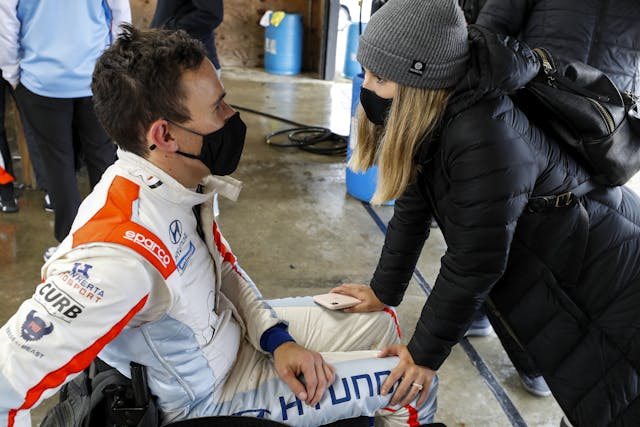
It was not to be. He was determined to stand for his wedding to girlfriend Karli. With help from his friends, he did, but what was clear to everyone else finally became clear to Robert Wickens: He would be in a wheelchair for life. Though he continued to train, his intensity waned.
It was a bitter pill, but he and Karli moved on. Wickens was aware that other paralyzed drivers, such as Alex Zanardi and IMSA competitor Michael Johnson, were racing using hand controls. But opportunities were scarce. Just as in Formula 1, if you can’t bring money, it’s so hard to find a ride.

Enter Michael Johnson and Bryan Herta. Johnson, paired with able-bodied driver Stephen Simpson, was competing for Herta’s Hyundai team. Hyundai anted up some money to rent Mid-Ohio Sports Car Course for a day, and they’d see if Wickens could drive using the hand controls developed by the team for Johnson.
But there were a couple of issues. One, it was raining and the track was slick. Two, Wickens had to learn how to use a system designed for someone else: Johnson is paralyzed from the chest down, due to a motorcycle racing crash, while Wickens is paralyzed from the waist down. Johnson’s system wasn’t ideal for Wickens.
The system consisted of a fairly conventional steering wheel with foot brakes and throttle for use by the able-bodied partner. For Johnson, the steering wheel had twin metal rings, set in front of and behind the wheel, when seen head-on. Press the front ring to go, pull the rear one to stop. Transmission is sequential and is operated by hand-operated paddles; you only need the clutch for launch, and that’s actuated by a big lever to the driver’s right. It isn’t that hard to get the car moving, to turn and accelerate and brake. To do it at race speed—that is profoundly difficult. It takes great hand strength: 150 pounds of pressure to operate the brakes. Wickens’ hands were numb by the end of the day.
Still, “It’s been great,” Wickens said. “It’s not every day that someone can lend you a race car to go take an item off your bucket list.”
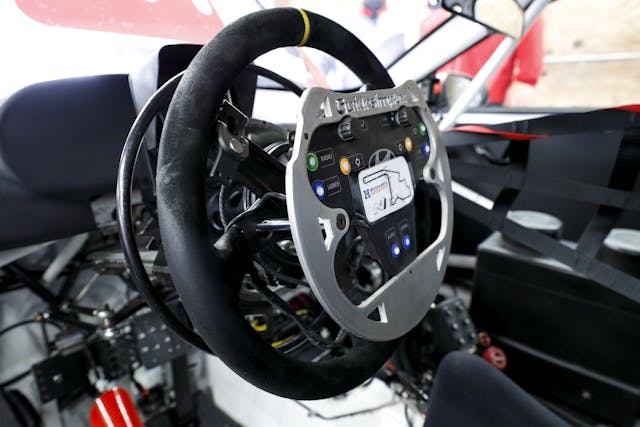
Given the miserable conditions, Wickens had proven to himself and the Hyundai team that he could do it. But he left that day not knowing if he’d ever be able to again. Money, of course. There had to be money.
That was May 4, 2021. “To finally tick that box is massive in my recovery and my journey back. Who knows what the future will bring, but I don’t want to get too far ahead of myself. I just want to take today for what it is.”
***
From that day forward, Herta and Hyundai began looking for ways to bring Wickens aboard. It happened during the off-season, and on January 28, 2022, Wickens drove in his first event, the four-hour IMSA Michelin Pilot Challenge race, on the day before IMSA’s biggest race, the Rolex 24 Hours at Daytona.
Wickens had never driven with partner Mark Wilkins—had never driven with a co-driver, period. He had never used the hand controls in competition. He had never raced at Daytona International Speedway. Yet he and Wilkins finished third. They ended up sixth in points with two wins, a triumphant first season. As always, Wickens wanted more. He wanted a championship.
For 2023, for reasons known only to master strategist Bryan Herta, who likes to shake up his teams every season, Wickens was paired with Gottsacker.
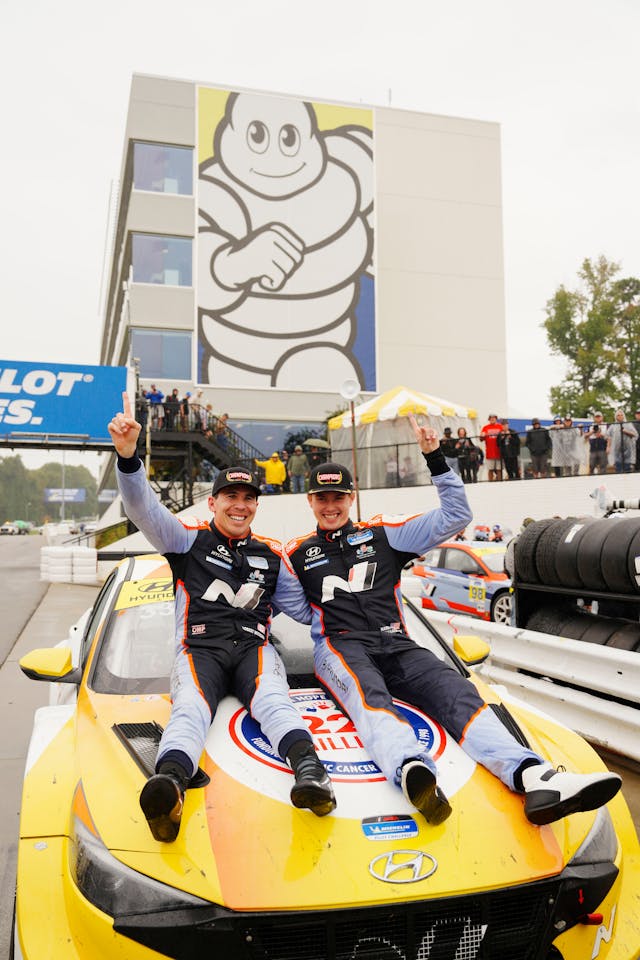
They clicked, finishing a credible sixth at Daytona and second at Sebring International Raceway, but that was as close as Wickens and Gottsacker got to a win. The good news was that they were incredibly consistent, leading the three Herta Autosport cars in the championship points by late in the season with a remarkable seven second-place finishes.
It all came down to the two-hour race at Road Atlanta in Braselton, Georgia, last Friday. It is “going down to the wire,” Wickens said. “The goal at the beginning of the season was to challenge for the championship and [we] have been doing just that all season long. We have been doing everything right this year, as long as we can have the same approach this weekend we should be in good shape.”
But there was the Audi out front, the car that stood between Wickens and Gottsacker and a championship.
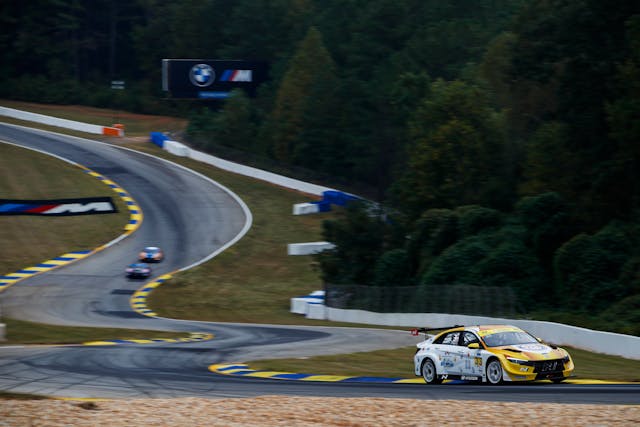
The cars came down the big hill onto the front straight, the Audi in the lead, and then—nothing. As the car was coming to the green flag, the Audi’s transmission failed, and it glided to a stop, thus finishing last in the results. Wickens and Gottsacker, who had to finish no further back than eighth to cinch the championship, drove calmly to fourth. That, despite the late-race wet conditions that are a particular favorite of Wickens—wisely, he held back, even though instinct and skill told him to charge forward.
Mission complete? Not quite. It seems likely Wickens will be back with Herta and Hyundai next year, but nothing has been decided. Still, a ride with a factory-affiliated team is tough to come by in sports car racing.
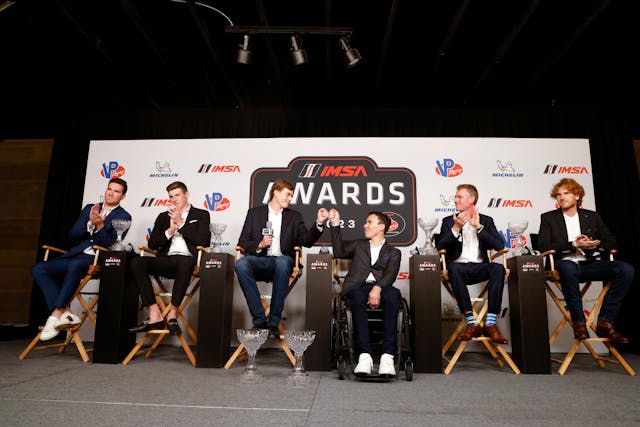
Eventually, Wickens would like to move up to the faster IMSA WeatherTech SportsCar Championship someday—that’s the series that sanctions the Rolex 24 and the Twelve Hours of Sebring.
He even dreams about trying to make it back to IndyCar, but, again that’s a matter of money, maybe $4 million for a season, plus a half-million to perfect hand controls for an Indycar. At the age of 34, he knows that time is not on his side.
But Wickens is happy where he is, both professionally and personally. At this moment, he and Karli and their son, Wesley, are on a Walt Disney Cruise.
It has been a long five years since that crash at Pocono. “But,” Wickens says, “if you had told me five years ago what life would be like now, I’m pretty sure I would have had a smile on my face.”
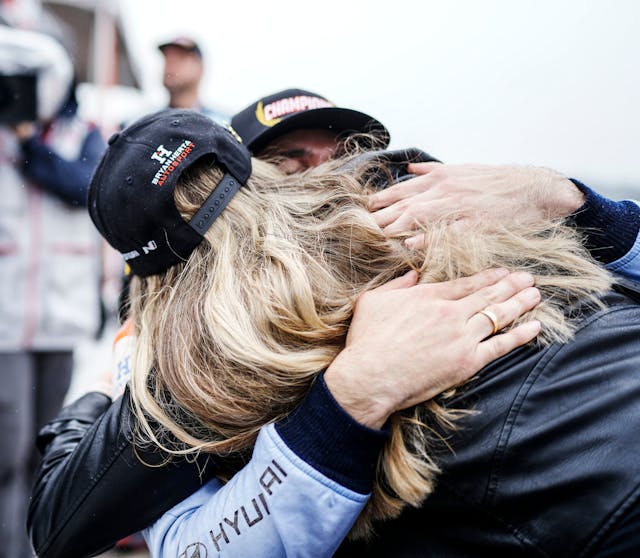
***
Check out the Hagerty Media homepage so you don’t miss a single story, or better yet, bookmark it. To get our best stories delivered right to your inbox, subscribe to our newsletters.

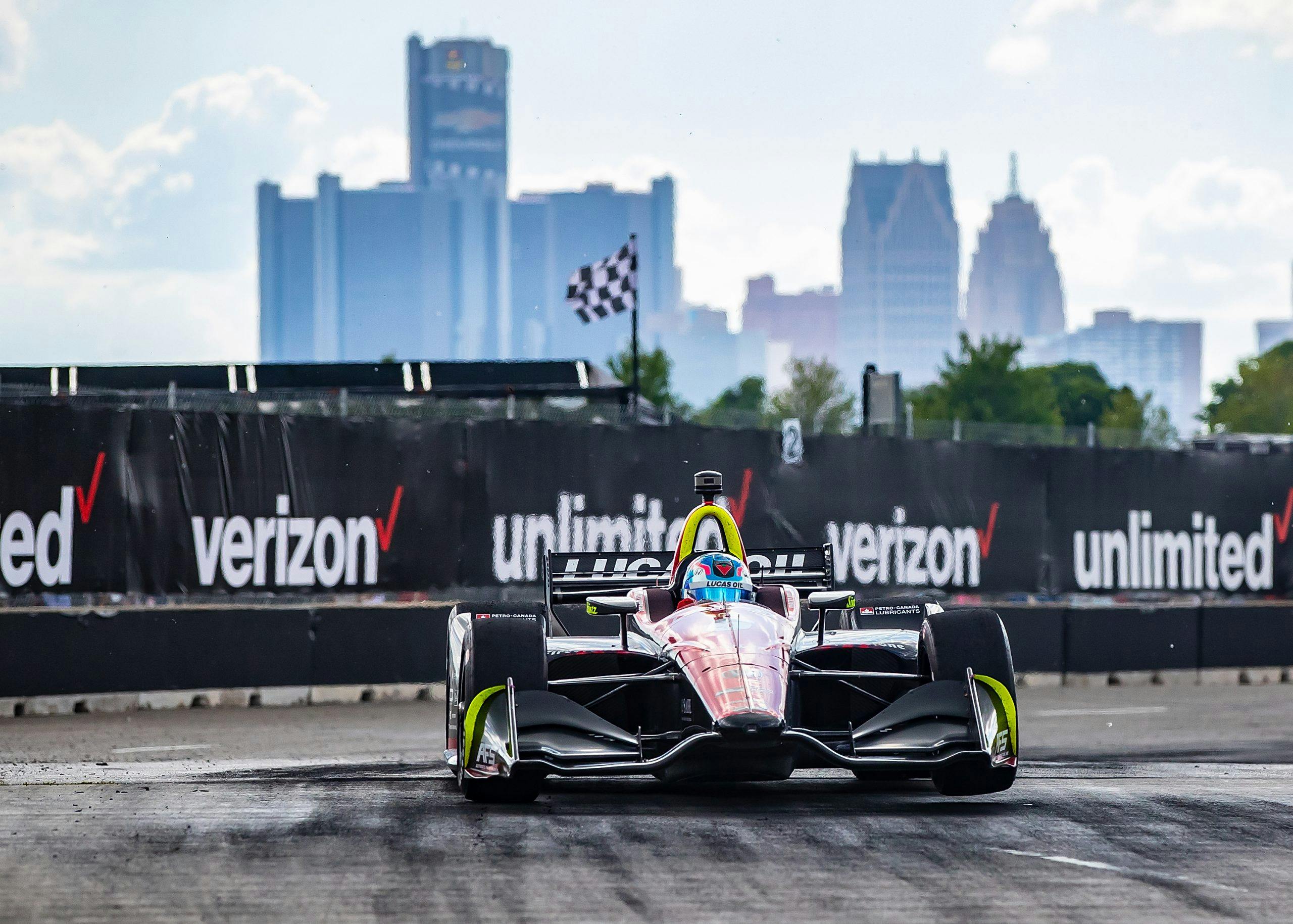
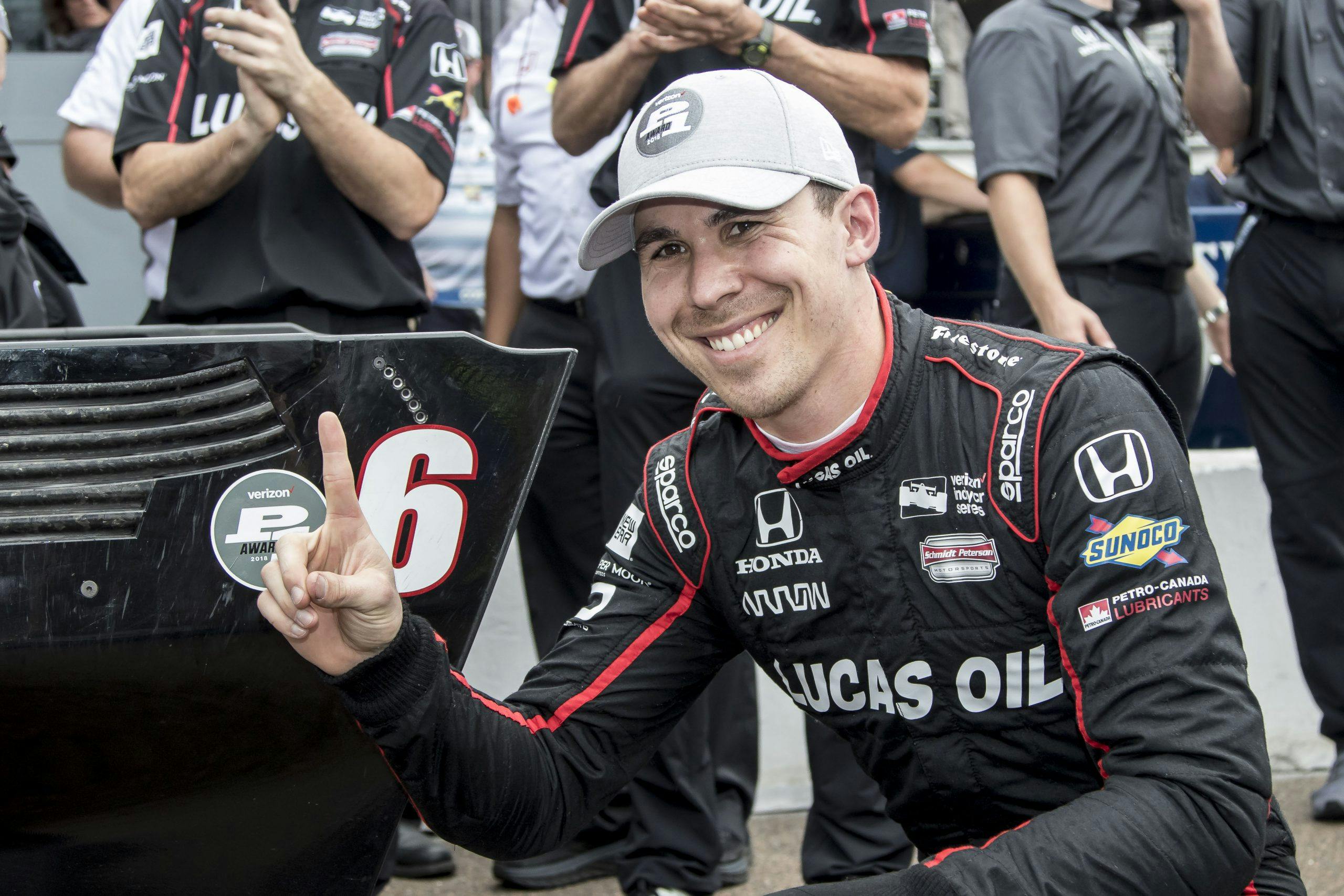
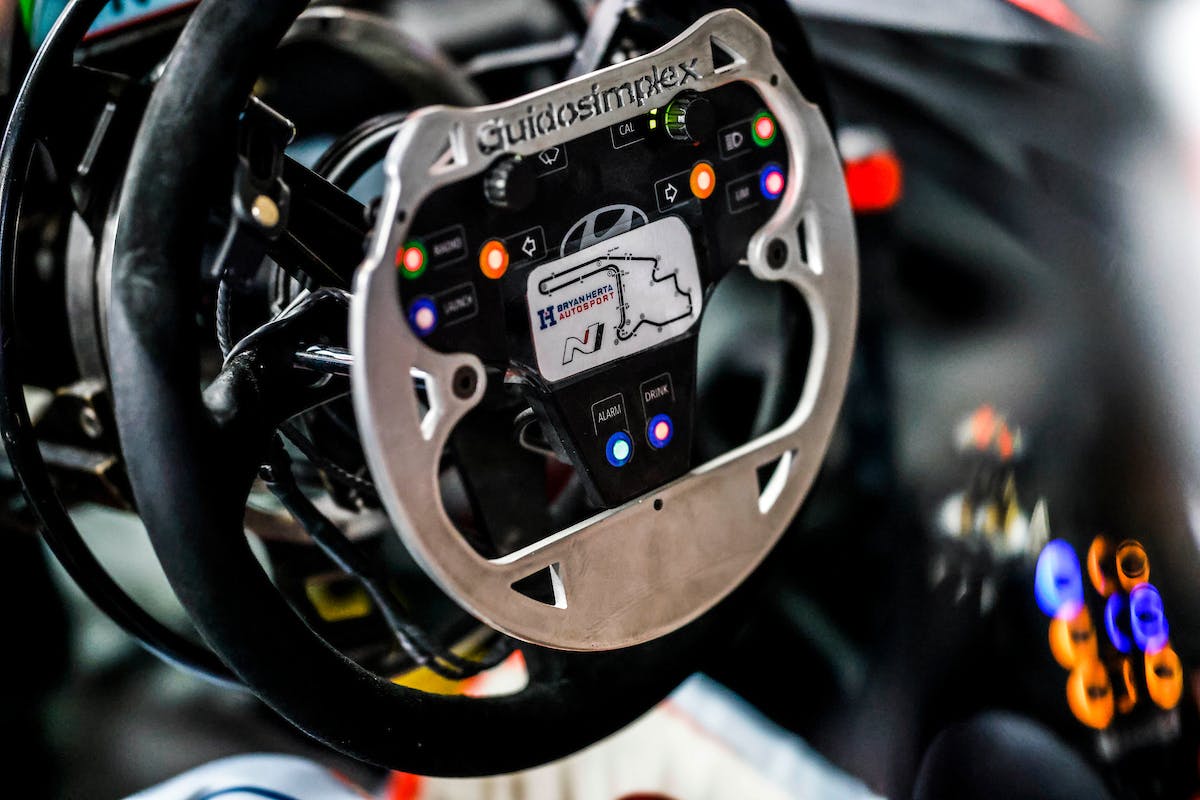




Hero stuff. One of the true nice guys in the business. Thanks for the update.
Triumph of the spirit. Good stuff.
Incredible story Steven. Robert is an inspiration. The technology developed and used is remarkable how far its come for hand controls.
Great to read the updates to this story. Wishing further success.
Wickens proves once again great athletes overcome what would seem to be insurmountable obstacles via hard work and determination. Looking forward to watching his career in motorsports continue to unfold.